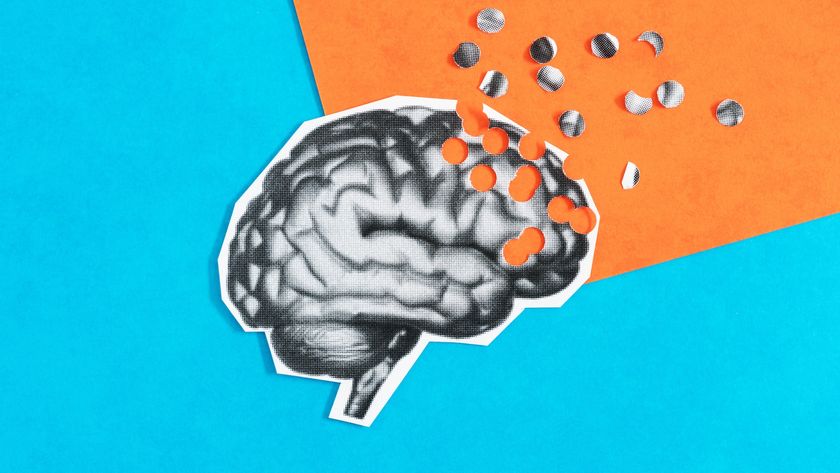Deadly Heart Disease May Hitch a Ride on Dust Storms

The probable cause of Kawasaki disease — a mysterious and sometimes deadly childhood heart disease that has stumped generations of doctors and that predominantly affects people in Japan, Hawaii and Southern California — may have been found.
The answer, it seems, is quite literally blowing in the wind — a wind originating in the farmlands of northeastern China carrying a fungus known as Candida, a type of yeast.
When inhaled, Candida can trigger a severe immune response in some children, inflaming blood vessels and causing permanent heart damage.
In 2011, an international team of scientists determined that outbreaks of Kawasaki disease in Japan were tied to seasonal winds from China. Now, this same multidisciplinary team has identified Candida in extensive air sampling along the path of the outbreaks. Their study appears today (May 19) in the journal Proceedings of the National Academy of Sciences. [7 Devastating Infectious Diseases]
"God only knows"
Kawasaki disease was first identified in 1961 by a Japanese doctor named Tomisaku Kawasaki, who, for a decade, called the illness GOK, short for "God only knows." Telltale signs of the disease include a strawberry-colored tongue and high, prolonged fever.
Kawasaki disease can now be treated effectively with an injection of immunoglobulin, a blood product containing antibodies. Without treatment, about 25 percent of children infected with Kawasaki disease will develop arterial aneurysms (balloonlike bulges in the arteries) and permanent heart disease; about 1 percent of untreated infections are fatal.
Sign up for the Live Science daily newsletter now
Get the world’s most fascinating discoveries delivered straight to your inbox.
Kawasaki disease is most prevalent in Japan, where about one in 150 children contracts it, and the number of cases there is on the rise, Kawasaki wrote in a journal article published earlier this year about the history of the disease that now bears his name. In the United States, there are 2,000 to 4,000 cases reported annually, according to the Centers for Disease Control and Prevention.
The new findings that Candida could cause Kawasaki disease may be a surprise — most scientists have thought the cause is most likely a virus, not fungus, said Dr. Jane Burns, who was part of the discovery team and is the director of the Kawasaki Disease Research Center at the University of California, San Diego School of Medicine.
"Candida could be making a toxin or a protein or other antigen that triggers Kawasaki disease," Burns told Live Science.
Burns added that other scientists have found that Candida can trigger Kawasaki-like symptoms in mice. But her team, led by climate scientist Xavier Rodó of the Catalan Institution for Research and Advanced Studies in Barcelona, did not set out looking specifically for Candida.
Burns called the team's finding "unexpected."
Blowing in the wind
The study provides "strong evidence for an atmospheric route of dispersion" of a disease-causing agent, said Dale Griffin of the U.S. Geological Survey in St. Petersburg, Florida, who is a public health microbiologist and an expert on dust storms. Griffin, who wasn't part of the new study, added that microbes, including fungi, can travel vast distances in the stratosphere, often hitching a ride on dust and other fine particles.
Griffin said that although windborne disease transmission isn't very common, it is not unprecedented. The Coccidioides fungus — which causes valley fever, a disease seen in the southwestern United States — is carried by the wind, albeit over shorter distances than Kawasaki disease fungus travels.
Some researchers are worried that climate change and warming temperatures will increase the types and incidences of fungal diseases affecting humans, according to Dr. Arturo Casadevall, an immunologist at Albert Einstein College of Medicine in New York.
Climate changes could foster the growth of fungi that the human immune system has a difficult time combating, according to Casadevall.
Why the incidence of Kawasaki disease is rising, however, remains a mystery. The disease is increasingly being reported in Southeast Asia, and Australia.
Rodó said the apparent low rates of Kawasaki disease in the agricultural regions of northeastern China may be due to the low population density there compared with Japanese cities. Burns added that genetics might play a role in susceptibility to the disease, and that the Candida-related agent might somehow become more virulent while airborne.
"The data suggest that people are doing something new [since World War II] in northeastern China," Burns said. "Could they be burning a biomass fuel in winter that carries the agent on aerosolized ash to Japan? Could there be some agricultural practice or crop or activity that is new since the 1960s? We need to figure out what the activity or condition is that creates these aerosols carried by the winds."
Acknowledging that many theories about the cause of Kawasaki disease have been proffered (such as carpet cleaners), the authors also said that more studies are needed to directly test the capacity of the microbes and toxins in their air samples to elicit a severe immune response seen in Kawasaki patients.
Follow Christopher Wanjek @wanjek for daily tweets on health and science with a humorous edge. Wanjek is the author of "Food at Work" and "Bad Medicine." His column, Bad Medicine, appears regularly on Live Science.

Christopher Wanjek is a Live Science contributor and a health and science writer. He is the author of three science books: Spacefarers (2020), Food at Work (2005) and Bad Medicine (2003). His "Food at Work" book and project, concerning workers' health, safety and productivity, was commissioned by the U.N.'s International Labor Organization. For Live Science, Christopher covers public health, nutrition and biology, and he has written extensively for The Washington Post and Sky & Telescope among others, as well as for the NASA Goddard Space Flight Center, where he was a senior writer. Christopher holds a Master of Health degree from Harvard School of Public Health and a degree in journalism from Temple University.

Man nearly guaranteed to get early Alzheimer's is still disease-free in his 70s — how?

The US is having its most active flu season in 15 years
Most Popular


